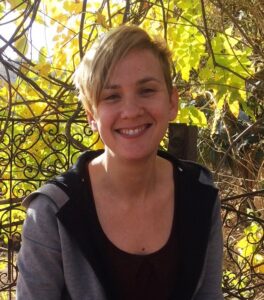
PhD student
Inbal completed her B.Sc. in Biology at Ben-Gurion University in 2003. She then traveled around for a couple of years and moved back home to Haifa where she completed her M.Sc. in Medical Sciences in the Department of Pharmacology, Rappaport Family Institute for Research at the Technion in 2009. Between 2009 and 2010 she worked as a Research associate at the Larisch Laboratory of Cell Death & Cancer Research in Haifa University. For the next 3.5 years she moved to NYC where she worked as a lab manager and research assistant for the Marraffini Laboratory of Bacteriology at the Rockefeller University and came back home to Haifa for her Ph.D. studies at the Glickman lab.
Email: imaniv@campus.technion.ac.il
Here at the lab, Inbal focuses on investigating the role of a ubiquitin mutant termed UBB+1 in Alzheimer’s disease. Studying a complex disease such as AD raises a need for a model that recapitulates loyally human pathology mimicking complex interactions between genes and environmental factors. Our hypothesis is that impairment of the UPS must play a crucial part in progression of AD, a disease whose hallmark is accumulation of defective/aggregated proteins. Our overall objective is to decipher the role of the UPS in progression of AD, particularly at early stages, by employing state-of-the-art ex-vivo models.
Publications
- Maniv I., Jiang W., Bikard D. and Marraffini LA. (2016): Impact of different target sequences on type III CRISPR-Cas immunity. J Bacteriol 198(6):941-50.
- Vainshtein A., Veenman L., Shterenberg A., Singh S., Masarwa A., Dutta B., Island B., Tsoglin E., Levin E., Leschiner S., Maniv I., Pe’er L., Otradnov I., Zubedat S., Mizrachi S., Weizman A., Avital A., Marek I. and Gavish M (2015). Specific tricyclic compounds, based on a quinazoline scaffold, can regulate programmed cell death of glial- and neuronal-origin cells and neurite sprouting, prevent brain damage, normalize aberrant behavior, and increase life span. Cell Death and Discov 1:15027.
- Hatoum-Aslan A., Maniv I., Samai P. and Marraffini LA. (2014): Genetic characterization of antiplasmid immunity through a type III-A CRISPR-Cas system. J Bacteriol 196(2): 310-7
- Jiang W., Maniv I., Arain F., Wang Y., Levin BR. and Marraffini LA. (2013): Dealing with the evolutionary downside of CRISPR immunity: bacteria and beneficial plasmids. PLoS Genet. 9(9): e1003844
- Hatoum-Aslan A., Samai P., Maniv I., Jiang W. and Marraffini LA (2013): A ruler protein in a complex for antiviral defense determines the length of small interfering CRISPR RNAs. J Biol Chem. 288(39): 27888-97
- Maniv I., Hatoum-Aslan A. and Marraffini LA. (2013): CRISPR decoys: competitive inhibitors of CRISPR immunity. RNA Biol. 10(5): 694-9
- Edison N., Reingewertz TH., Gottfried Y., Lev T., Zuri D., Maniv I., Carp MJ., Shalev G., Friedler A. and Larisch S. (2012): Peptides mimicking the unique ARTS-XIAP binding site promote apoptotic cell death in cultured cancer cells. Clin Cancer Res. 18(9):2569-78
- Edison N., Zuri D., Maniv I., Bornstein B., Lev T., Gottfried Y., Kemeny S., Garcia-Fernandez M., Kagan J. and Larisch S. (2012): The IAP-antagonist ARTS initiates caspase activation upstream of cytochrome C and SMAC/Diablo. Cell Death Differ. 19(2):356-68
- Hatoum-Aslan A., Maniv I. and Marraffini LA. (2011): Mature clustered, regularly interspaced, short palindromic repeats RNA (crRNA) length is measured by a ruler mechanism anchored at the precursor processing site. Proc Natl Acad Sci U S A. 108(52):21218-2
- Dror N., Tveria L., Meniv I., Ben-Shmuel S., Filipovich T. and Fleisher-Berkovich S. (2008). Inhibitory effect of somatostatin on prostaglandin E2 synthesis by primary neonatal rat glial cells. Regul Pept. 150(1-3):21-5